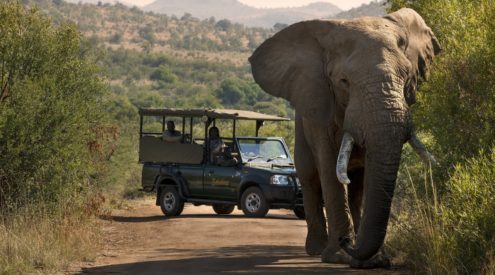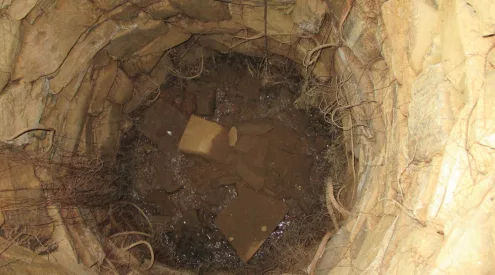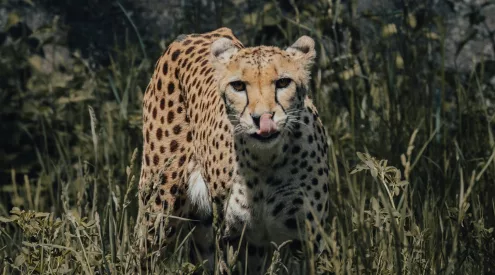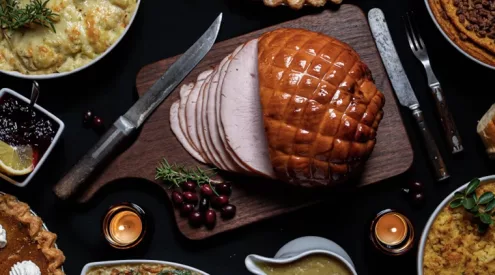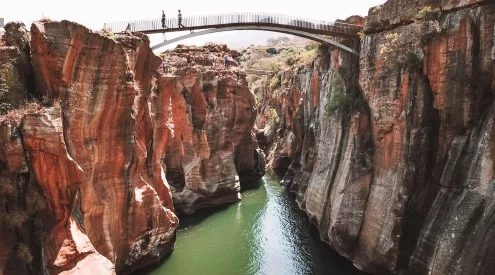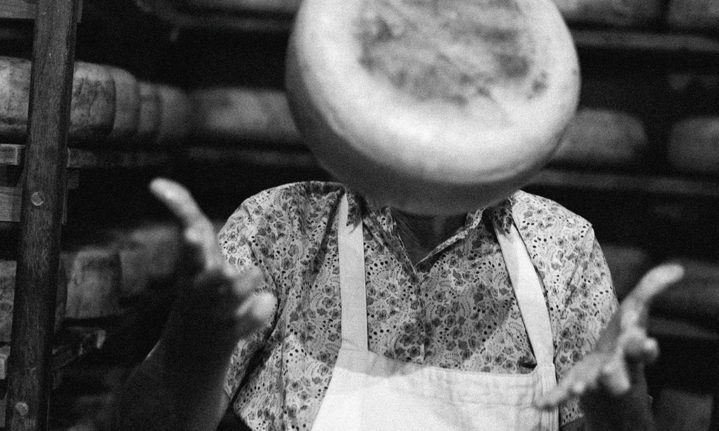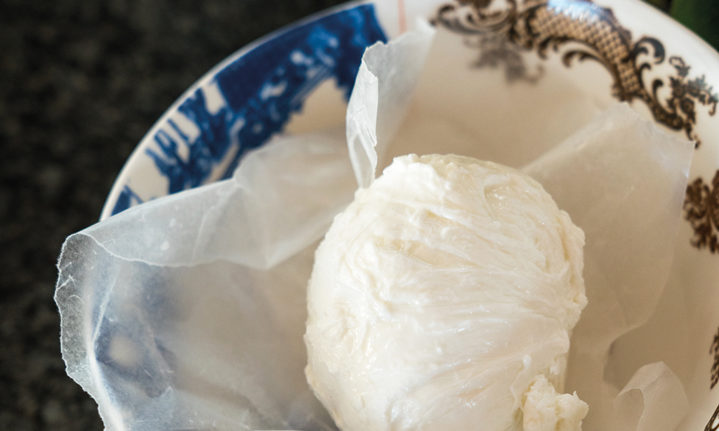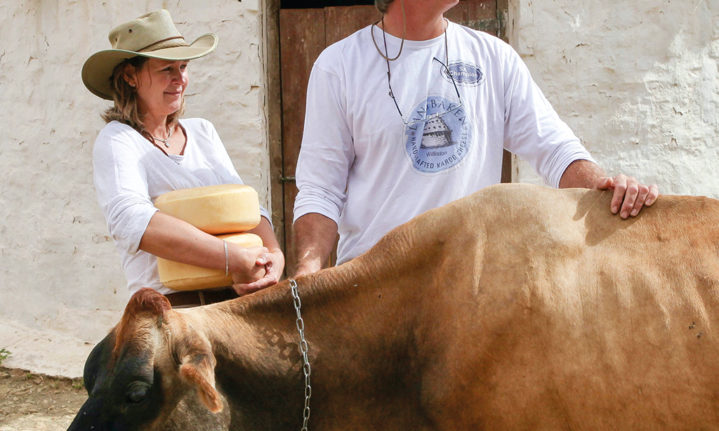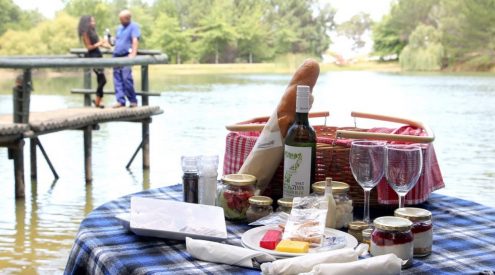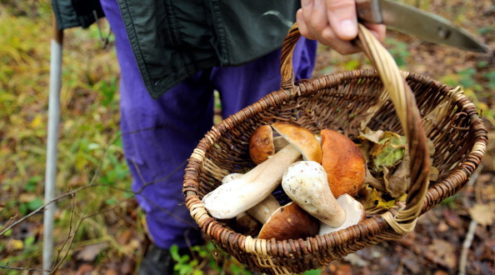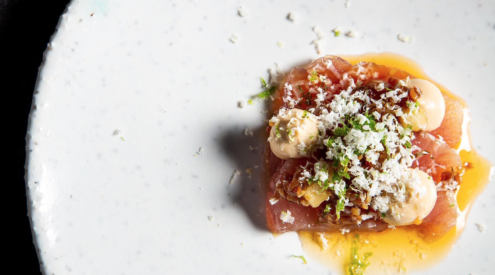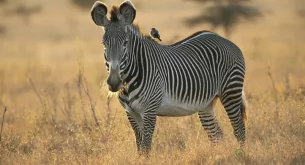South Africans may not have invented the cheese wheel, but we sure rolled with it. Every ’80s traybake sported a layer of over-processed orange cheese as a crust. Luckily, those days are behind us as more local creameries step up to the award-winning global cheese plate.
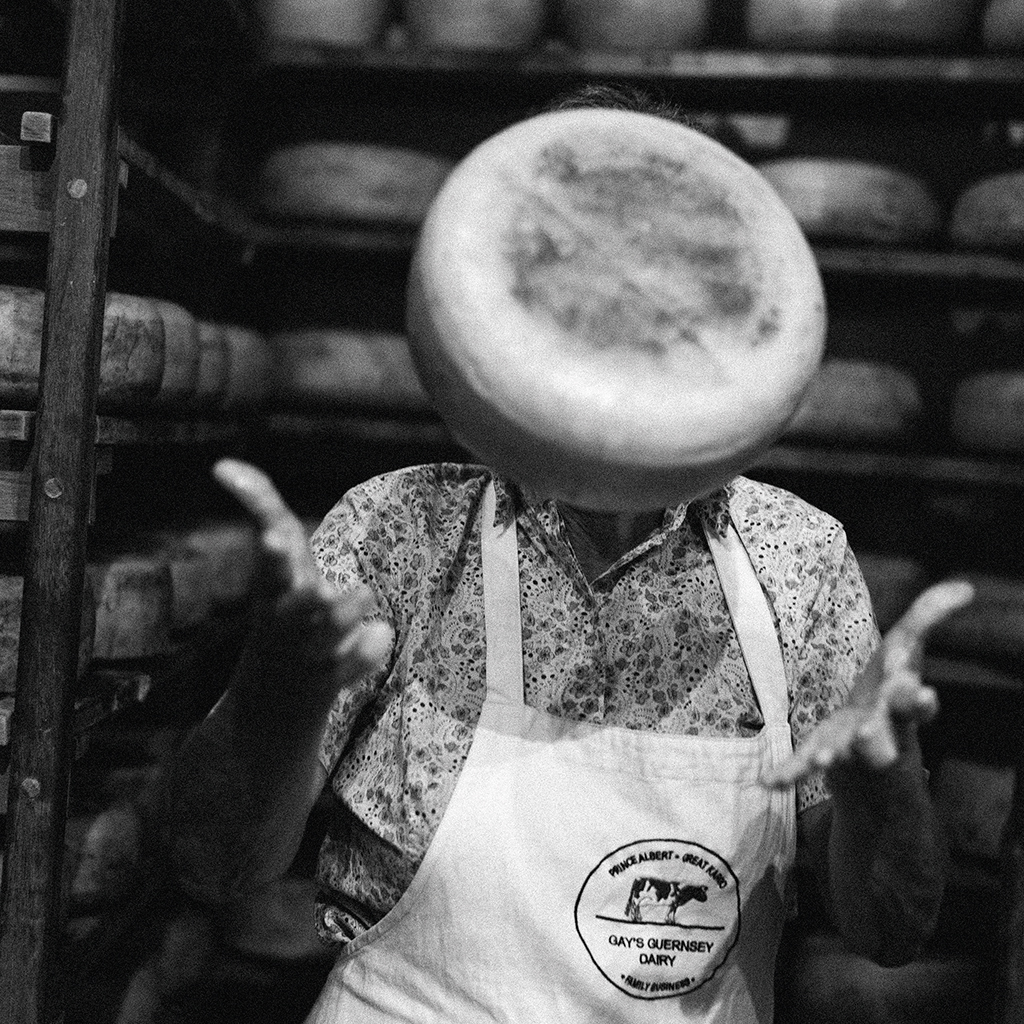
Gay van Hasselt turns cheeses at Gay’s Guernsey Dairy.
Words: Louzel Lombard Steyn | Photography: Stephanie Veldman, supplied
My parents’ cheesemaking business was over before it even started. They were young, dumb, broke and naively optimistic about a side-hustle on the farm. Mom was a city girl with starry-eyed dreams of being a real, not-afraid-to-get-your-hands-dirty farmer’s wife, and they needed money. The idea of a creamery on the farm seemed perfect, idyllic even. Dad suggested milking their herd of cattle to feed the new dairy business. The fact that they were Hereford cattle, not dairy cows as one would normally use for milking, didn’t seem like an issue at the time.
It took five strong men to hold a single Hereford cow in place while one milkman ducked for cover to do the deed. The yield was small, and often bewildered cows would kick over the buckets as they broke loose and bustled off. The folks persevered… the promise of a homemade cheese wheel too alluring to give up. People have managed to milk water buffalo before, after all.
To sell the cheese, a nod from the health inspector was needed, so the local official was invited to the farm about a week in – just in time for the cattle coup d’état. It started with the calves breaking through the kraal wall and rushing towards the cows, knocking over full buckets of milk as they went. All the excitement prompted a mass err… fertilisation… of the kraal with bits of dung splattering all over. One cow broke loose and sprang down the road on three legs – the harness securing her hind legs and tail, still in place.
As the prize cow kicked over the last remaining bucket of milk, the Lombard family cheese-making business kicked the bucket, too. The health inspector could not stop laughing; 30 years on, he still chuckles when he sees my parents in town.
A slice of cheese may seem like the most arbitrary thing, but the amount of commitment and sheer luck it takes to produce is deceiving. I even distrust the legend of the Arab merchant who packed a pouch of camel milk in a bag made of cured sheep-stomach on a journey and “accidentally” discovered cheese. I understand the science of the heat, the motion and the remaining animal rennet in the bag and how that could have separated the milk into curds and whey, creating the first yoghurt-type cheese. What I don’t believe is that a man single-handedly milked a camel.
Nonetheless, cheese has been around longer than many other complex or intelligently “processed” foods. The earliest evidence of cheesemaking in the archaeological record dates back to 5 500 BCE in Poland, where holed pottery – strainers – covered in the residue of milk fat solid molecules were found. Other archaeological evidence found on Egyptian tomb murals confirms that a type of Egyptian cheese may have developed independently of the Polish cheeses around 1 200 BCE.
Fast forward a few centuries and cheese has become one of the most ingrained foods on the planet. Even in South Africa, we’ve had our own little cheese evolution and are now among the most upstanding cheese connoisseurs on the globe. We’ve gone from relatively edible (over-processed orange cheese) to Camembert and goat’s milk cheese (thank you Fairview). Nowadays, braaibroodjies are elevated thanks to the addition of a kicky Karoo Pecorino while cashews boldly carry the vegan cheese flag. Even the milking of water buffalo is no longer such a foreign concept.
Heck, perhaps it’s the time for the Lombard creamery to rise from the kraal mud again…

Prince Albert Royal cheese.
Prince of cheese
The now-famed Guernsey Dairy of Gay van Hasselt started in 1990 when she was milking three cows in a stone kraal. More than 30 years later, every cow in the herd is still known by name.
This family-run cheesery is focused on making natural products using raw, full-cream milk from its own herd of Guernsey cows.
Guernsey cows are docile, adapt well to the Karoo climate and produce milk that is high in butterfat. Interestingly, Guernsey milk carries the same A2 protein as goat’s milk, which means the products are a hit with lactose-intolerant cheese lovers. All cheese lovers, really… Gay’s Guernsey Dairy has grown to be a firm favourite in Prince Albert. Its strong Parma Prince and flavourful Prince Albert Regal have raked in international awards.
Where: Gay’s Guernsey Dairy, 4 Church Street, Bo-dorp, Prince Albert, Western Cape
023 541 1274, gaysguernseydairy.com
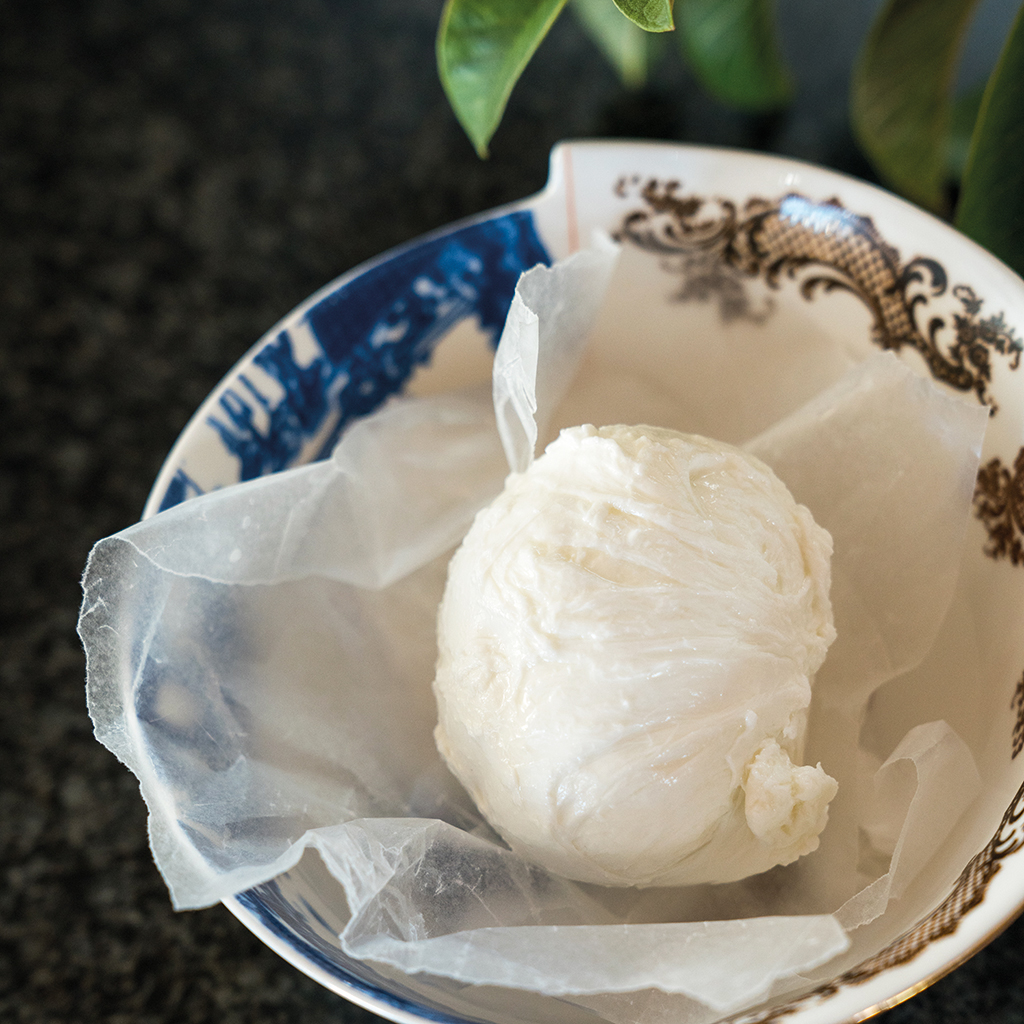
Freshly made buffalo mozzarella at Babylonstoren.
Buffalo soldier
Take the buffalo by the horns and join Babylonstoren’s Alta Eybers for a hands-on workshop making your own buffalo mozzarella cheese. The day-long experience kicks off with visitors meeting the farm’s herd of water buffalo that produce the milk used to make this traditional, fresh cheese. Back in the Cheese Room, Alta demonstrates the craft behind this creamy delicacy.
Finally, a decadent lunch of cheese, meats and preserves from the Babylonstoren deli ends the day.
Two classes for June 2022 and one for October 2022 have been scheduled.
Where: Babylonstoren Wine Farm on the Klapmuts – Simondium Road, Simondium, Western Cape.
021 863 3852, babylonstoren.com
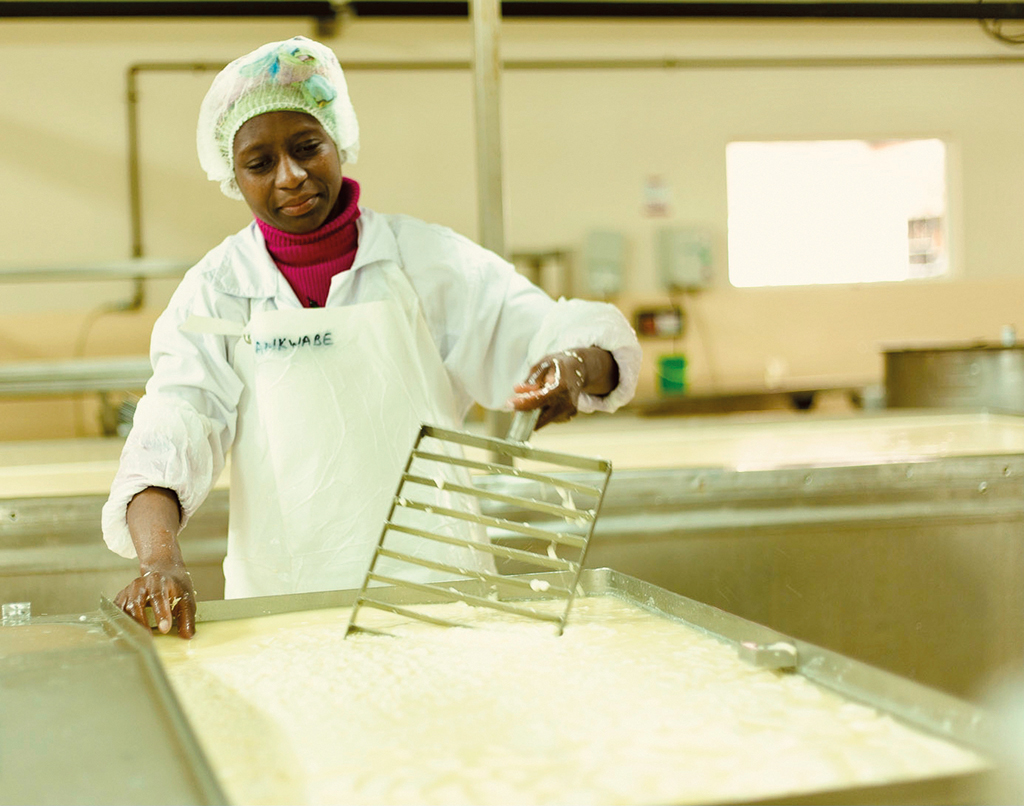
Mankwabe Seliane from Indezi River Creamery stirs the curds.
Lekker local
The Harris family of the Midlands is the creative mastermind behind the three-generational Indezi River Creamery in Balgowan. Over the years, the family has crafted many proudly South African cheeses, all with special connections to their KwaZulu-Natal environment. ‘Our cheeses all get their Zulu names from our staff, who name them as we develop them,’ says Kate Posthumus, granddaughter of the original family cheese-makers, Jimmy and Wendy Harris. ‘The names celebrate our South African culture. Our Kwaito cheese, for
example, has been a family favourite since we started making cheese. It’s a soft sweetmilk cheese that’s an easy transition away from “boring” gouda to something that has more character and looks much prettier on a cracker,’ Kate says.
Where: Indezi River Creamery, offramp 125 on the N3, Balgowan, KwaZulu-Natal
033 492 0571, indezi.co.za
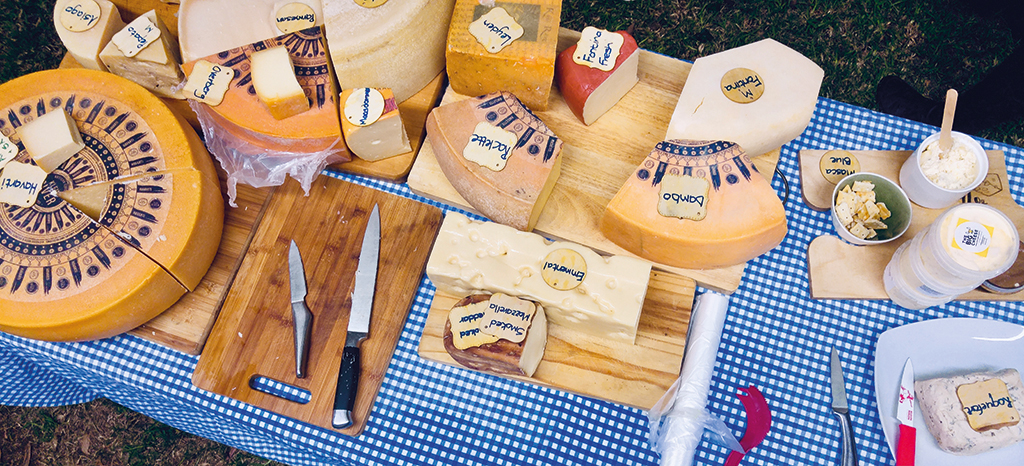
A spread from The Big Cheese includes Sid Oertel’s all time favourites, from SA and beyond.
Cheese on wheels
If you’re in the Upper Highway area between Durban and Ballito or Durban and Amamzintoti you can have your cheese and eat it, too. Sid Oertel is a retired engineer and cheese connoisseur and he’ll deliver speciality cheeses to your doorstep.
His business, The Big Cheese, is a natural outflow of passion for making, collecting and tasting great cheeses from across the globe.
‘I import a few like the Mature Maasdam, but mostly the cheeses are sourced from within South Africa,’ Sid says. ‘Current favourites include the Overberg from Klein River in the Cape and Noah’s Cheese’s incredible mozzarella from the Free State. I also source from the Karoo and, of course, from within KwaZulu-Natal.’
Contact Sid on WhatsApp; he’ll send you a list of available cheese stocks and delivery takes place within the next few days.
Where: Upper Highway from Durban to Hillcrest, KZN. You can also catch him at several markets. WhatsApp him for more info. 082 862 0577
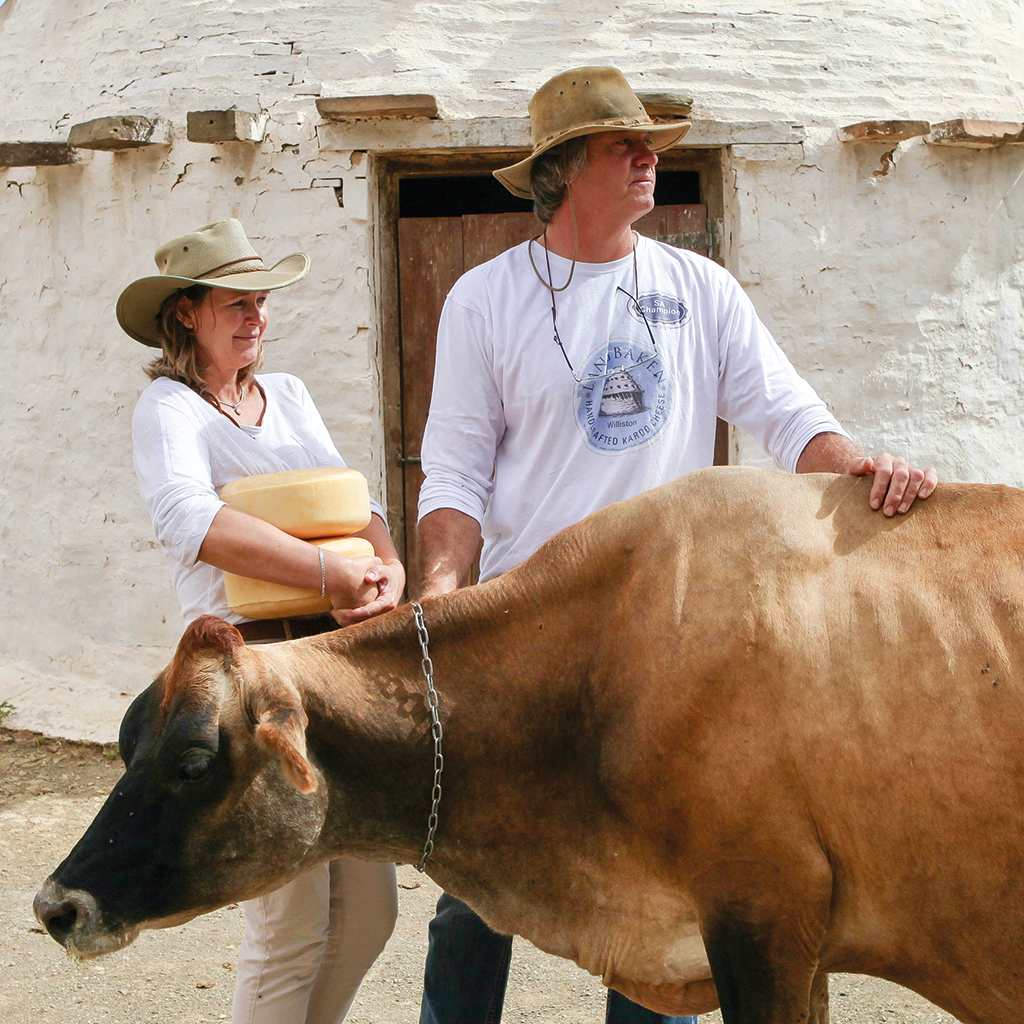
Peter and Francy Schoeman from Langbaken Karoo Cheese with one of their prized Jerseys.
Cheesy love
You’ll be hard-pressed to find a ‘cheesier’ love story than that of Peter and Francy Schoeman of Langbaken Karoo Cheese. The couple moved to Langbaken Farm in Williston in 2010 with 10 Jersey cows and a dream of making proudly South African cheeses. Their combined love of slow food and great cheese paid off.
They work according to Slow Food principles, using traditional farmhouse methods in their old wagon-house turned cheesery. The Schoeman’s pride and joy is the Karoo Blue, which has won the Slow Food Award twice. Other favourites include the Karoo Crumble (four-time South African Dairy Champion and Qualité award winner) and the Karoo Sunset.
Where: Contact Peter or Francy for cheese tasting and sales. Langbaken cheeses are mostly sold in Cape Town, at various delis and food markets. In the Karoo, you’ll find them in Williston at the Manna restaurant on the main street. 082 550 4981
Banking on cheese
Did you know
Italian regional bank Credem grants loans to Parmigiano Reggiano producers in the area and holds the cheese as collateral in its own temperature-controlled warehouse during the maturation process. It’s a win-win, essentially replacing part of the ageing operations for the farmers while financing further production.
ALSO READ: Babylonstoren: All you need to know
https://www.getaway.co.za/babylonstoren/


